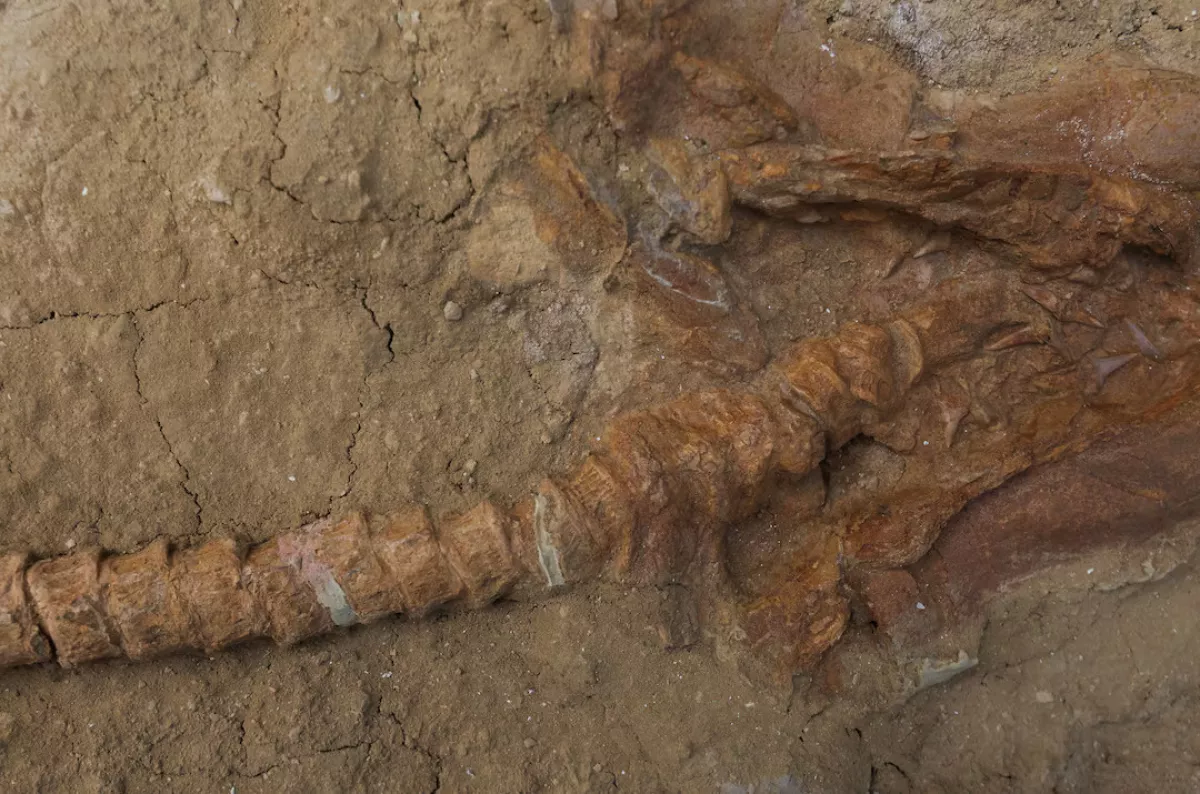Great white shark's 9-million-year-old ancestor found in Peru desert
One might expect marine fossils to be primarily found in coastal or underwater sedimentary deposits, but surprisingly, vast desert landscapes are proving to be some of the best locations for ancient marine relics. This notion was highlighted by a recent discovery in the Pisco Basin of Peru—a well-preserved 9-million-year-old fossil of Cosmopolitodus hastalis, an ancestor of the great white shark.
Many deserts, which are arid today, were once thriving marine environments, and as an article by by Forbes highlights, they continue to offer valuable insights into ancient ecosystems and the tectonic processes that transform coastlines into deserts over millions of years.
The Pisco Basin, located along Peru's Pacific coast, is one of the world’s top paleontological sites, attracting biologists, geologists, and fossil enthusiasts alike. The basin’s sedimentary layers preserve a remarkable record of marine life from millions of years ago.
It was in these layers that the fossil of Cosmopolitodus hastalis was found, a species that swam the oceans from the late Oligocene to the early Pleistocene epochs. This discovery is crucial because it provides a direct look at the marine biodiversity that once thrived in an area now marked by dry landscapes and steep coastal cliffs.
The Pisco Basin’s geological history is as dynamic as it is fascinating. Over millions of years, tectonic activity has raised the seafloor, turning what was once an oceanic environment into dry land. Yet, the fossil-rich sediments from this past marine habitat have remained largely undisturbed.
This excellent preservation is due to the unique conditions in the basin: rapid sediment accumulation combined with minimal biological disturbance, allowing marine fossils to be conserved in exceptional detail.

In the past, deserts were not typically considered prime locations for finding evidence of ancient marine ecosystems. However, the article points out that scientists now recognize that arid regions like the Sahara, Atacama, and Gobi deserts serve as time capsules, preserving fossils from long-submerged seafloors.
Plate tectonics have been pivotal in turning seas into deserts. Over time, the shifting of Earth’s plates has caused once-deep marine basins to be uplifted into deserts, exposing sediment layers that were once at the ocean’s bottom.
The authors provide the African Sahara as an example: it’s now the world’s largest hot desert, but extensive marine fossil deposits discovered there tell the story of its aquatic past. Fossils of ammonites and invertebrate assemblages from the Cretaceous period have provided crucial clues about the marine life that flourished in the Tethys Sea, which once separated the northern and southern super-continents of Laurasia and Gondwana.
Similarly, the Atacama Desert in Chile, famous for its dryness and clear skies, was once part of a coastline. Fossilized remains of marine reptiles and fish show the diversity of life during periods of climatic change. The Gobi Desert has also yielded significant fossil discoveries, including both dinosaur and marine invertebrate fossils, illustrating its ancient marine origins.
One reason these deserts preserve fossils so well is the favorable conditions: low moisture and minimal biological activity slow the degradation of sediment layers containing fossils.
Furthermore, the rapid lithification process—where sediment transforms into rock—preserves fossil details, allowing paleontologists to reconstruct ancient marine ecosystems with great accuracy.
Deserts, with their rich geological histories, function as natural time capsules, preserving remnants of ancient seas in remarkably pristine conditions. According to the article, these regions offer invaluable insights into the evolution of marine life over millions of years and challenge our assumptions about where to search for the remains of extinct species.
By Nazrin Sadigova








